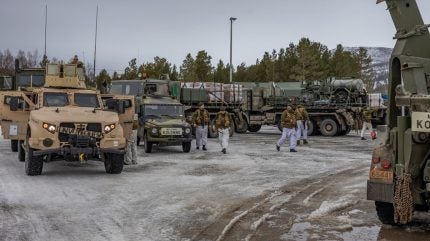
A transnational transport corridor will span the northern regions of Norway, Sweden and Finland, allowing a flow of military cargo and personnel to travel unencumbered.
Norwegian Prime Minister Jonas Gahr Støre, Swedish Prime Minister Ulf Kristersson and Finnish President Alexander Stubb agreed to the initiative during a meeting held in Bødo, Norway on 19–20 June 2024.
Their respective defence ministers will cooperate with civilian actors to identify potential bottlenecks, update the necessary regulatory and legislative framework and invest in essential infrastructure to ensure prompt and efficient mobility.
“Now that we are all members of Nato we can work together to defend in entirely new ways,” suggested Støre. “Maintaining a credible defence in the north is crucial to our security. That means we must lay the foundation for moving reinforcements in the north quickly if the situation requires.”
Logistics across Europe
This is not the first time that a military corridor has opened up across neighbouring European territories. The Netherlands, Germany and Poland agreed to a transport corridor from the North Sea to the Baltic in February.
The continental corridor will ensure the smooth transfer of troops and supplies to the Baltic states, where some Nato military units are based and where numerous exercises take place.
Similarly, the three Nordic nations operate very closely. Their respective air forces will pursue a “common air education” despite the outlier of the Swedish Gripen in contrast to the many F-35A units in the region.
“Previously, we have thought in terms of north-south when planning the transport of military personnel and equipment,” noted Støre. “Now we will also be thinking west-east to a greater extent. National infrastructure must satisfy Nato’s need to be able to move forces across the national borders.”
Challenges of the Arctic
The Arctic region is home to Russia’s Northern Fleet, particularly the Kola Peninsula, on Russia’s North-Western coast, as the base for many of its nuclear forces, submarines, and bombers, which could be involved in the event of a broader conflict between Russia and Nato.
Building the right infrastructure for the enterpise in such an austere environment will prove to be more challenging than doing so in the temperate climes on the continent. Although, this is not new to the three partners.
Norway has already made efforts to accommodate the UK Littoral Response Group, the commando-led Royal Marines force which reacts to emerging crises in Europe – a fellow partner in Nato and the Joint Expeditionary Force – with the construction of Camp Viking, situated in the village of Øverbygd.



